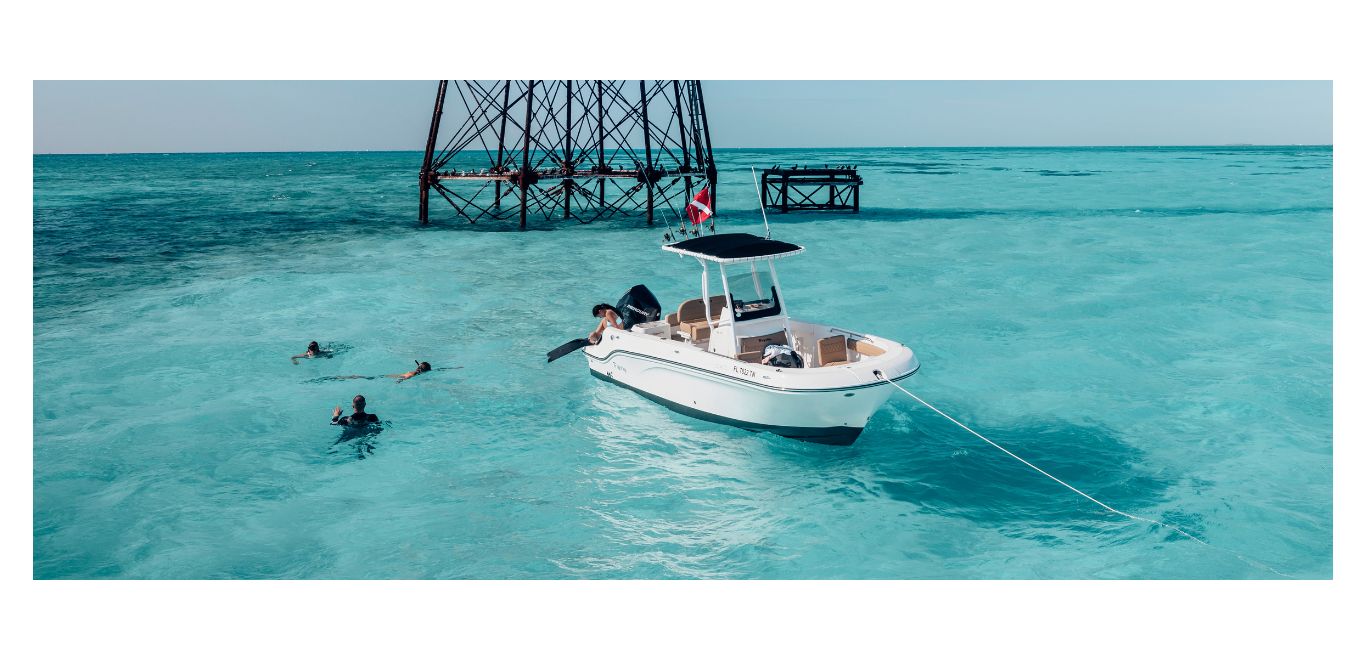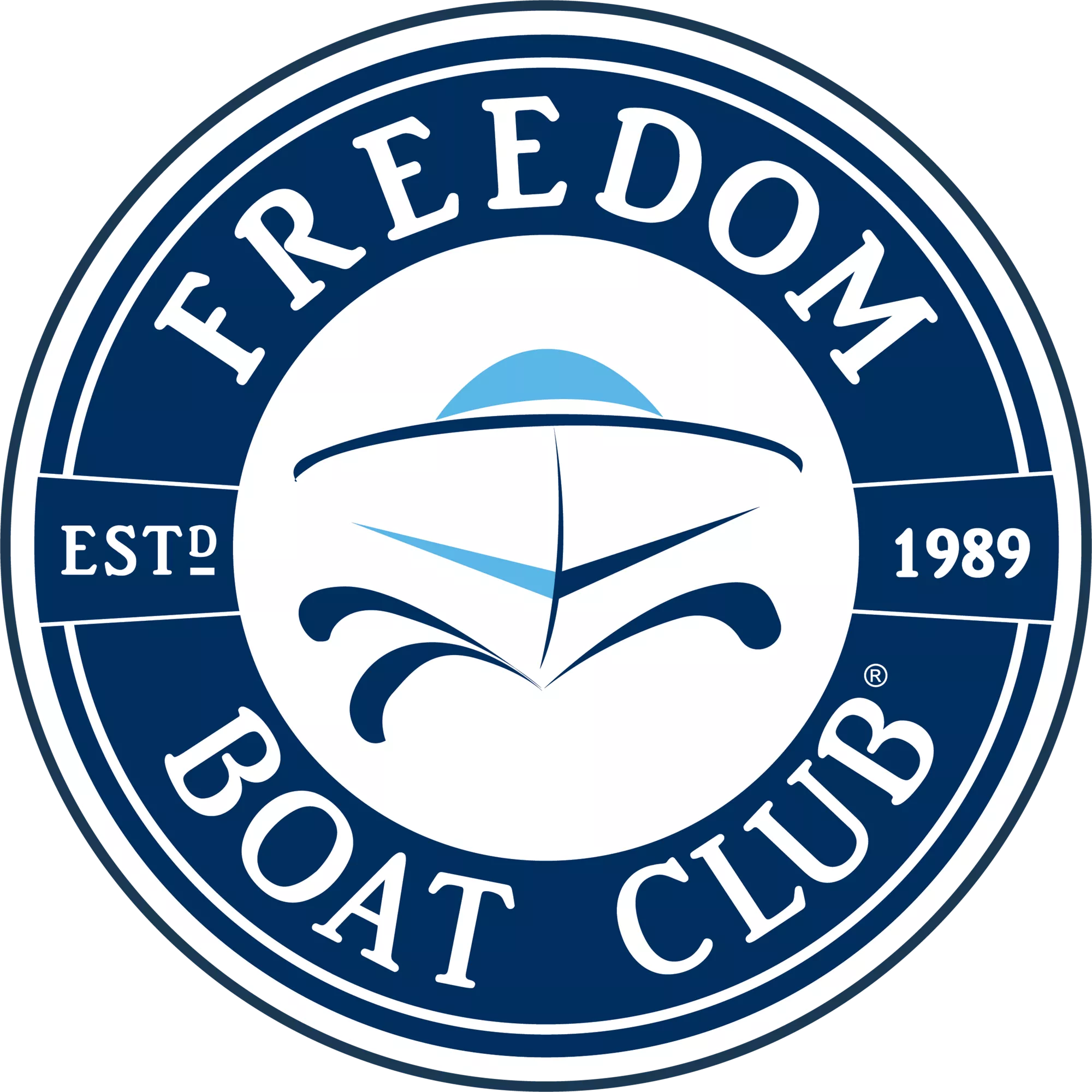
Where would you like to boat?
How to Anchor a Boat in 10 Steps
Knowing how to securely anchor a boat is a crucial skill for all boaters to master. Proper anchoring allows Freedom Boat Club members to enjoy serene coves and bustling sandbars without worry. We’ve outlined 10 steps that when applied effectively, will allow you to anchor the vessel safely and ensure a stress-free experience.
1. Assess the Weather Conditions
Are the waters calm or choppy? When you arrive at your ideal location, assess the wind and water current to determine how much room you have because the boat will inevitably swing around the anchor. You must also remain vigilant of other boats and hazards such as rocks, reefs and buoys.
2. Determine the Depth
Knowing the water depth is key to selecting the appropriate scope. Scope is defined as the length of the chain, line or rope that you deploy into the water. You should aim for a scope that is 5-7 times the water’s depth to ensure a strong hold. A longer scope is ideal, but make sure you have swinging room that won’t put you at risk of collision.
3. Anticipate Changes in Condition
We all know weather can be unpredictable, so don’t expect the tides and currents to remain the same during the duration of your time anchored. Take into consideration changes that could affect your anchor's position. You may need to adjust your anchor accordingly to remain stable.
4. Prioritize Safety and Compliance
Freedom Boat Club members must remember to avoid anchoring in navigational channels or high-traffic areas at all costs. Doing so will prevent collisions with other boats and hazards – as well as ensure a comfortable experience free of turbulence caused by the wakes of other boats.
5. Properly Deploy the Anchor
Thinking of simply tossing your anchor into the water? Well, don’t. Always lower the anchor gently into the water without throwing it so that the lead does not get tangled in the anchor. Slowly releasing the chain or line will allow you to maintain control and estimate anchor’s scope.
6. Set the Hook
Slowly back the boat as you put the rode in the water. In order to set the hook, which requires digging it into the seabed, cleat if off and give the anchor a tug by carefully putting the engine in reverse. This will allow the anchor to firmly set. Operate with caution and avoid sudden movements that could dislodge the anchor before it has a chance to dig in.
7. Assess Your Surroundings & Position
After anchoring, survey your surroundings and the boat’s position to ensure you ended up where you intended to before setting the hook. You should have ample swinging room that’s free of hazards. You should also watch and wait for a while to make sure the boat is not drifting which will indicate that the anchor is holding.
8. Re-Anchor if Needed
Do not hesitate to re-anchor the boat is something doesn’t seem right. Choosing to re-anchor and achieve a more secure position can make all the difference and allow you to enjoy a worry-free boat day. You may not feel the need to re-anchor right away but continuously monitoring the boat's movement will allow you to be prepared to adjust if needed.
9. Retrieve the Anchor in Reverse
When you’re ready to leave, start the engine before releasing the rode. At this point, there may be quite a bit of tension on the rode. Partially release it and drive forward slowly release the tension – don’t forget to watch your fingers! If the anchor becomes stuck, hold the line and move forward to attempt to free it. It may take a few tries before you’re successful.
10. Stow it Away
Once your anchor is successfully pulled from the seabed and aboard the boat, please stow the rode neatly to prevent tangling. This will make it easier for our dock staff to prepare the vessel for the next member. Lastly, secure the anchor to prevent damage while the motion.
Freedom Boat Club members ultimately need to know that safe anchoring requires patience and careful attention to detail. With practice and by following these steps, you'll be anchoring like a seasoned pro in no time. But if you ever need a refresher, talk to your club’s dock staff about arranging a free, 1:1 training with one of our licensed captains.
Want to learn more? Click here to read our tips for safely navigating a boat in waters familiar and unknown.
